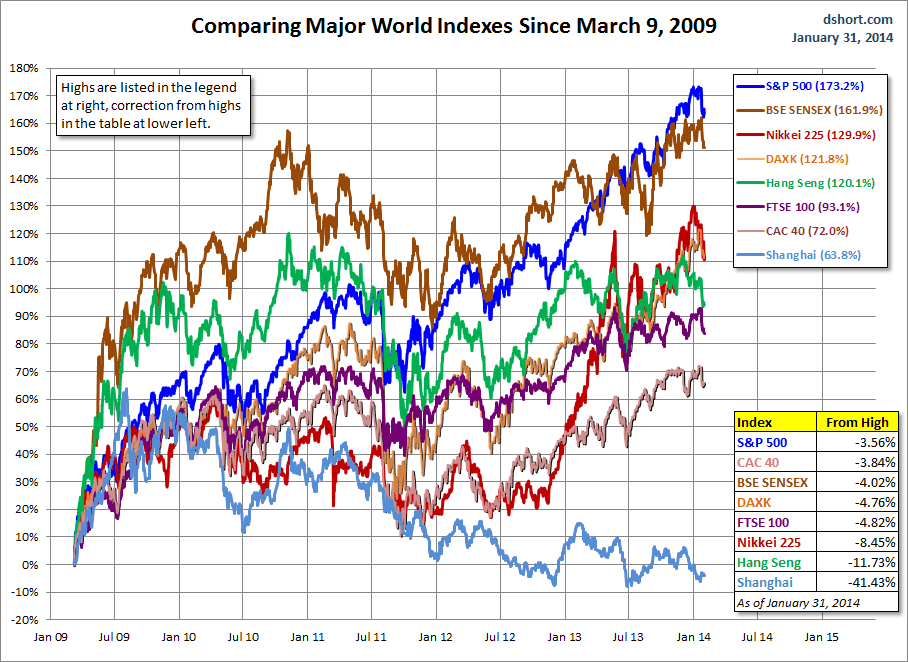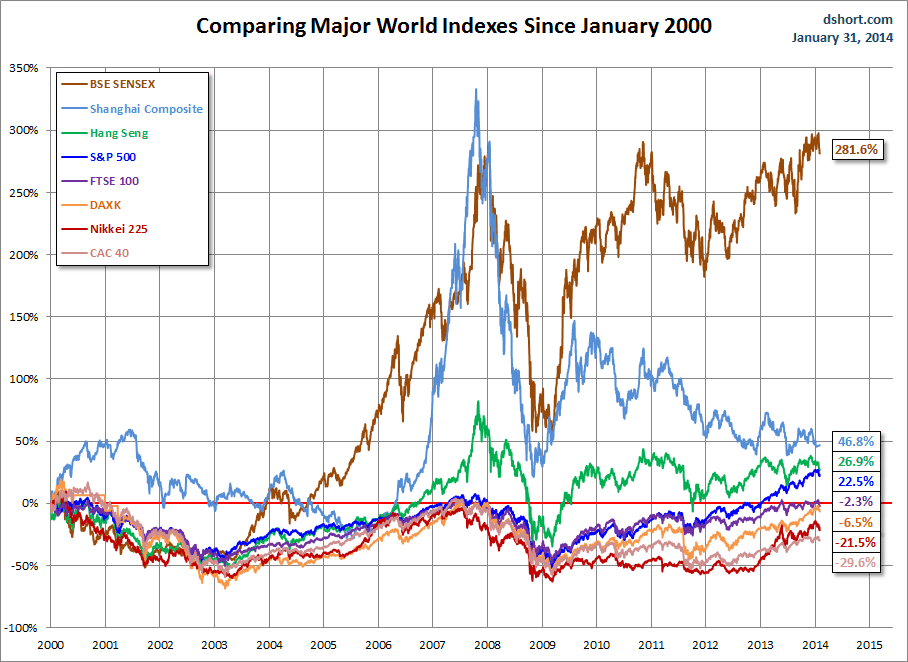Over the past week, seven of the eight indexes on my world markets watch lists posted losses, and the single positive finish, for France's CAC 40, was a measly 0.10%. Next best was the -0.43% loss of the S&P 500. The other six indexes posted declines ranging from the Shanghai Composite's -1.04% to the Nikkei 225's -3.10%.
For the benchmark month of January, all eight indexes finished in the red, ranging the Germany's DAXK at -2.86% selloff to the Nikkei's -8.45% rout.
The Shanghai Composite remains the only index on the watch list in bear territory—the traditional designation for a 20% decline from an interim high. See the table inset in the chart below. The index is down a mortifying 41.43% from its interim high of August 2009. At the other end, the S&P 500 is only 3.56% off its all-time high on January 15th.
Here is a look at 2014 so far:
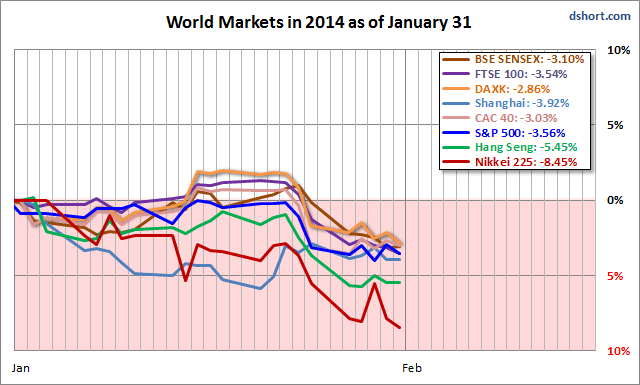
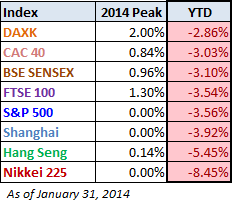
Here is a table highlighting the year-to-date index performance, sorted from high to low, along with the 2014 interim highs for the eight indexes. At this point, all eight indexes are in the red, with last year's big winner, the Nikkei, now in the YTD cellar.
A Closer Look at the Last Four Weeks
The tables below provide a concise overview of performance comparisons over the past four weeks for these eight major indexes. I've also included the average for each week so that we can evaluate the performance of a specific index relative to the overall mean and better understand weekly volatility. The colors for each index name help us visualize the comparative performance over time.
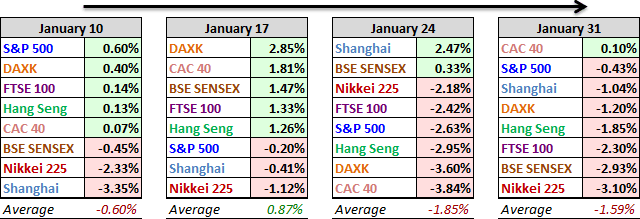
The chart below illustrates the comparative performance of World Markets since March 9, 2009. The start date is arbitrary: The S&P 500, CAC 40 and BSE SENSEX hit their lows on March 9th, the Nikkei 225 on March 10th, the DAX on March 6th, the FTSE on March 3rd, the Shanghai Composite on November 4, 2008, and the Hang Seng even earlier on October 27, 2008. However, by aligning on the same day and measuring the percent change, we get a better sense of the relative performance than if we align the lows.
A Longer Look Back
Here is the same chart starting from the turn of 21st century. The relative over-performance of the emerging markets (Shanghai, Mumbai SENSEX and Hang Seng) up to their 2007 peaks is evident, and the SENSEX remains by far the top performer. The Shanghai, in contrast, formed a perfect Eiffel Tower from late 2006 to late 2009.
Check back next week for a new update.
Note from dshort: I track Germany's DAXK a price-only index, instead of the more familiar DAX index (which includes dividends), for constency with the other indexes, which do not include dividends.

